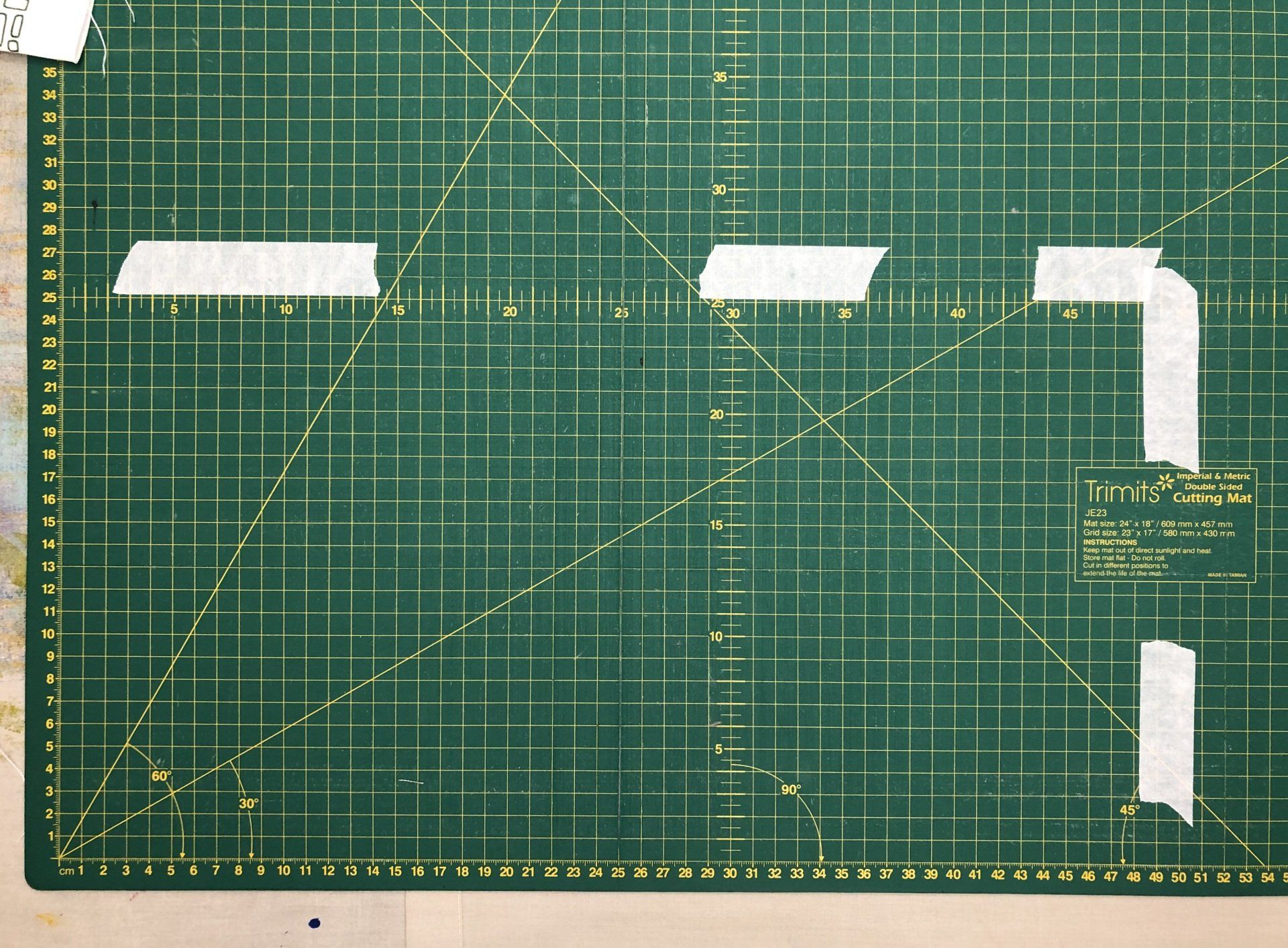Patchwork - piecing fabric to a specific size
Piecing together fabrics, improv style

If the finished size you require fits on to your cutting mat it's very straight forward, simply mark with some masking tape a little outside the finished size you require. You'll see I want a piece of patchwork to finish at 25cm x 48cm. If you want a larger piece, work up several sections and join them together to achieve your finished size.
Very loosely, lay your chosen fabrics across the area you want to fill, make sure the pieces overlap by the approx seam allowance you will be using. When I'm working with linen I leave a more generous seam allowance as it tends to fray, otherwise a 5mm / 1/2" seam allowance will be fine.
Play around with the layout at this stage until you're happy with the balance of prints and colours and the overall spread of different sized fabrics to keep the piece interesting. Aim to make the piece a little larger than your finished size to allow for squaring up and trimming to size.
Work in small sections and begin by taking just two pieces of fabric and joining them together, press the seams to one side then trim and square up the sides.
Repeat with every section, joining two or three fabrics together as you go. You'll see that I've flipped my first section as I felt the balance was better, change things around now if you'd like to.
Double check that these will cover your finished size measurements once the seam allowance has been used. Add more fabric if necessary then begin to join the sections together.
Make sure you allow for any wonky edges (my middle section for example isn't straight along the bottom edge).
Once you have all your sections joined together, press the seams to one side and then trim down to the finished measurement you require. Then you're ready to make up your project.
This is the method I use when making my Fabric Buckets and the Japanese Rice Pouches. Why not embellish further with buttons and stitching, be creative and make your project part of your journey.
share with a friend















